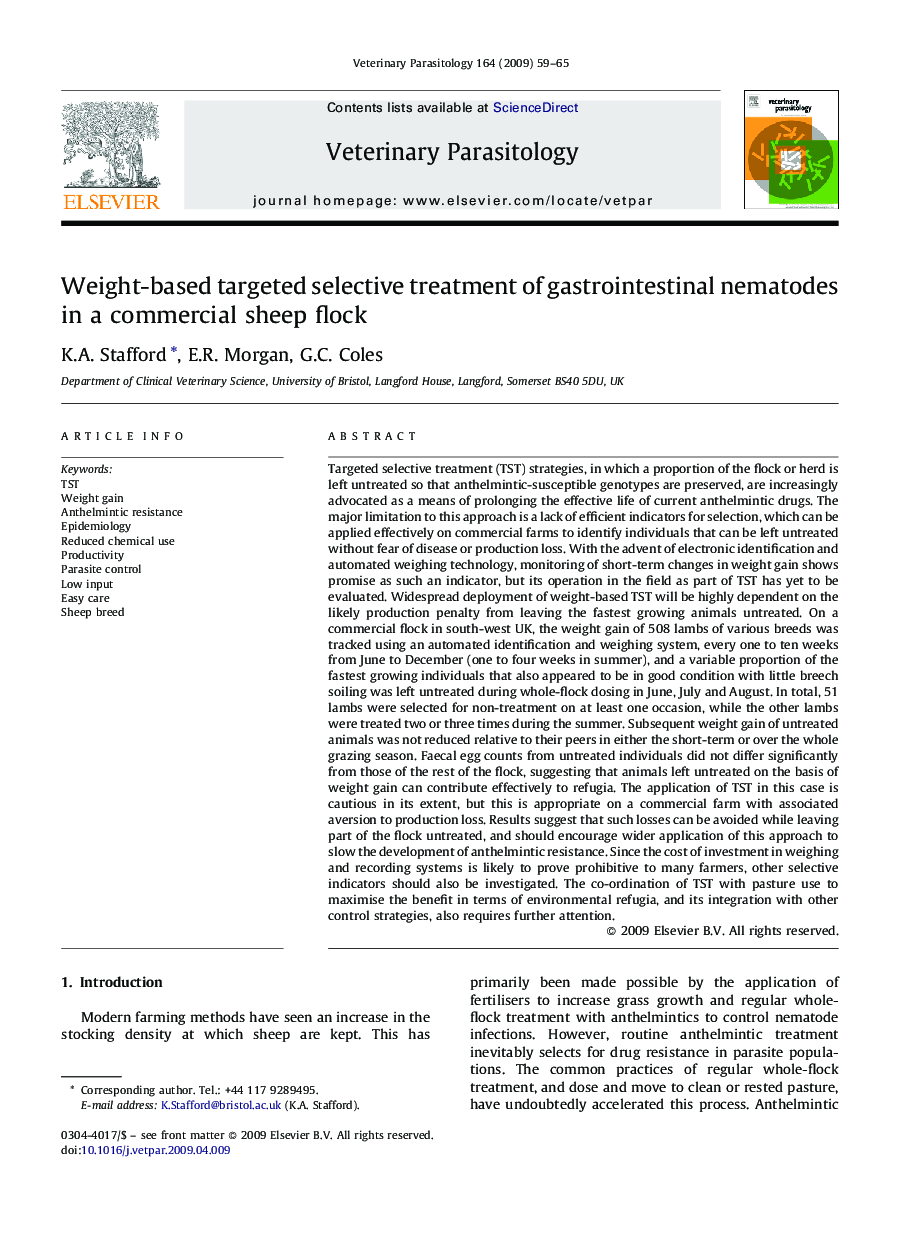| Article ID | Journal | Published Year | Pages | File Type |
|---|---|---|---|---|
| 2471178 | Veterinary Parasitology | 2009 | 7 Pages |
Targeted selective treatment (TST) strategies, in which a proportion of the flock or herd is left untreated so that anthelmintic-susceptible genotypes are preserved, are increasingly advocated as a means of prolonging the effective life of current anthelmintic drugs. The major limitation to this approach is a lack of efficient indicators for selection, which can be applied effectively on commercial farms to identify individuals that can be left untreated without fear of disease or production loss. With the advent of electronic identification and automated weighing technology, monitoring of short-term changes in weight gain shows promise as such an indicator, but its operation in the field as part of TST has yet to be evaluated. Widespread deployment of weight-based TST will be highly dependent on the likely production penalty from leaving the fastest growing animals untreated. On a commercial flock in south-west UK, the weight gain of 508 lambs of various breeds was tracked using an automated identification and weighing system, every one to ten weeks from June to December (one to four weeks in summer), and a variable proportion of the fastest growing individuals that also appeared to be in good condition with little breech soiling was left untreated during whole-flock dosing in June, July and August. In total, 51 lambs were selected for non-treatment on at least one occasion, while the other lambs were treated two or three times during the summer. Subsequent weight gain of untreated animals was not reduced relative to their peers in either the short-term or over the whole grazing season. Faecal egg counts from untreated individuals did not differ significantly from those of the rest of the flock, suggesting that animals left untreated on the basis of weight gain can contribute effectively to refugia. The application of TST in this case is cautious in its extent, but this is appropriate on a commercial farm with associated aversion to production loss. Results suggest that such losses can be avoided while leaving part of the flock untreated, and should encourage wider application of this approach to slow the development of anthelmintic resistance. Since the cost of investment in weighing and recording systems is likely to prove prohibitive to many farmers, other selective indicators should also be investigated. The co-ordination of TST with pasture use to maximise the benefit in terms of environmental refugia, and its integration with other control strategies, also requires further attention.
